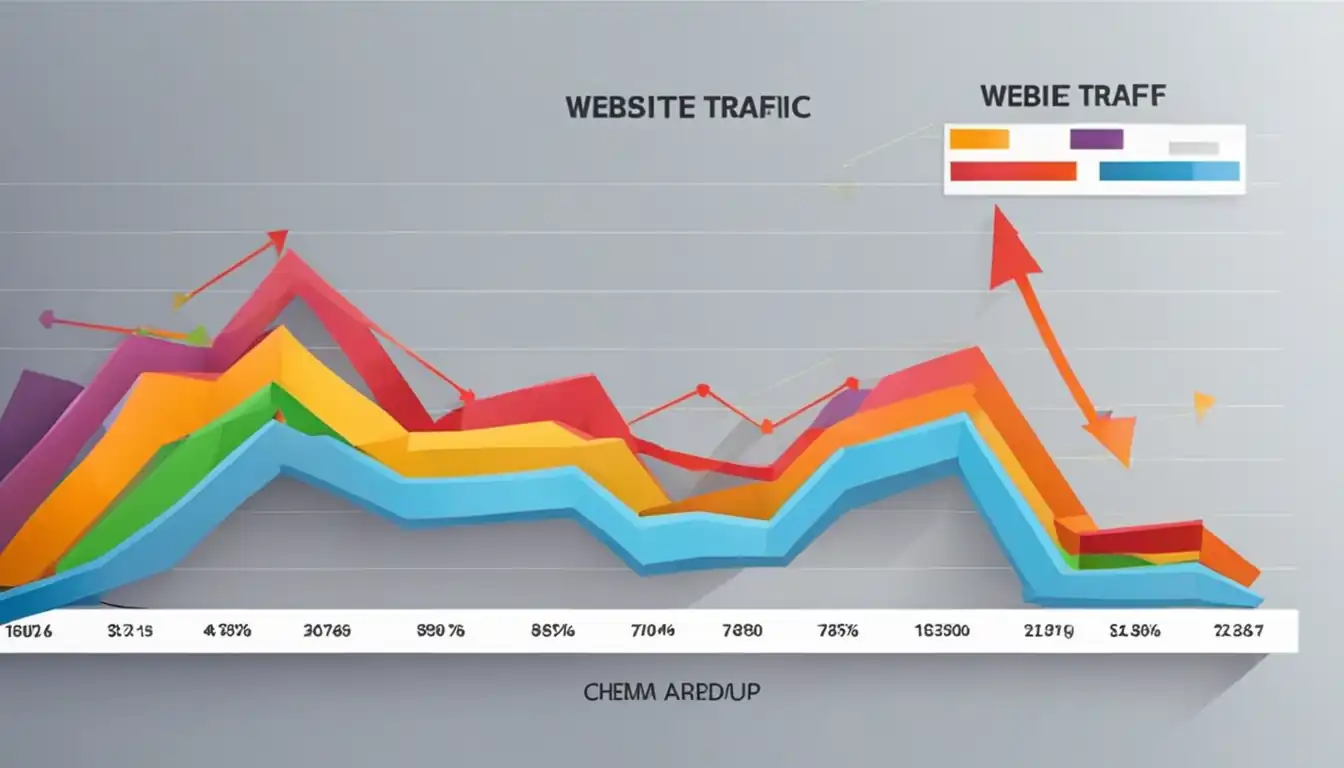Content Schema Markup for SEO: Elevating Your Digital Presence

In the vast digital landscape, standing out from the crowd is essential for success. One powerful tool that can help elevate your online presence is content schema markup for SEO. By implementing schema markup correctly, you can boost your visibility in search engine results and attract more organic traffic to your website. Let's dive into the world of schema markup and discover how it can take your digital presence to new heights.
Understanding Schema Markup and Its Importance in SEO
What is Schema Markup
Schema markup is a form of microdata that can be added to a website's HTML to provide search engines with more detailed information about the content on the page. This structured data helps search engines better understand the context of the content, which can lead to improved visibility and higher rankings in search results.
Why Schema Markup is a Game Changer for SEO
1. Enhanced Search Results: By implementing schema markup, websites can enhance their search results with rich snippets, which are visually appealing and provide users with more information about the content before they even click on the link.
2. Increased Click-Through Rates: Rich snippets created through schema markup can attract more clicks from users, as they stand out in search results and provide valuable information at a glance.
3. Improved Visibility: Schema markup helps search engines understand the content on a webpage more accurately, leading to increased visibility for relevant searches and potentially higher rankings.
4. Better User Experience: By providing search engines with structured data through schema markup, websites can improve the overall user experience by making it easier for users to find relevant information quickly.
Incorporating schema markup into your SEO strategy can elevate your digital presence and help you stand out in competitive search results.
Types of Schema Markups Relevant to Content Creators
When it comes to content schema markup for SEO, there are several types that are particularly relevant to content creators. By implementing these markups, you can enhance the visibility and relevance of your content in search engine results pages.
Article and Blog Post Markups
One of the most common types of schema markups used by content creators is the Article markup. This markup allows you to provide specific details about your article, such as the headline, author, date published, and main image. By including this markup on your content, search engines can better understand the context and relevance of your article, which can lead to higher rankings.
Blog Post markup is similar to Article markup but is specifically designed for blog posts. It includes additional fields such as blog post category and tags. By using this markup on your blog posts, you can further optimize your content for search engines.
How-To and FAQ Markups
How-To markup is ideal for step-by-step guides or tutorials. This markup allows you to outline each step in a clear and structured format, making it easier for users to follow along. By incorporating How-To markup into your content, you can increase its visibility in search results and attract users who are looking for instructional content.
FAQ markup is another valuable tool for content creators. This markup enables you to present frequently asked questions and their corresponding answers in a structured format. By using FAQ markup, you can enhance the user experience by providing quick answers to common queries directly in the search results.
Incorporating these schema markups into your content can help elevate your digital presence and improve your SEO performance. By providing search engines with more detailed information about your content, you can increase its visibility and attract more organic traffic to your website.
Implementing Schema Markup on Your Website

Implementing schema markup on your website is crucial for enhancing your SEO efforts and improving your digital presence. By providing search engines with structured data about your content, you can increase the visibility of your website in search results and drive more organic traffic to your site.
Tools You Need to Start
Before you begin implementing schema markup on your website, make sure you have the following tools at your disposal:
Schema Markup Generator: Use a tool like Google's Structured Data Markup Helper or Schema.org's markup generator to create schema markup code for your content.
Google Search Console: Verify ownership of your website in Google Search Console to monitor how search engines are interpreting and displaying your structured data.
Schema Testing Tool: Use Google's Structured Data Testing Tool to validate the schema markup on your website and ensure it is implemented correctly.
Step-by-Step Guide to Adding Markup
Follow these steps to add schema markup to your website effectively:
Identify Content Types: Determine the different types of content on your website that could benefit from schema markup, such as articles, products, events, or reviews.
Choose Appropriate Schema Types: Select the most relevant schema types for each piece of content based on its nature and purpose. Refer to Schema.org for a comprehensive list of available schemas.
Generate Markup Code: Use a schema markup generator tool to create structured data code for each piece of content using the chosen schema types.
Add Markup Code to Your Website: Insert the generated schema markup code into the HTML source code of your web pages, preferably within the
section or directly before the closing tag.Test and Validate Markup: Use Google's Structured Data Testing Tool to check if the schema markup is correctly implemented on your website without any errors or warnings.
Monitor Performance: Regularly monitor Google Search Console for any issues related to structured data and track improvements in search engine visibility and click-through rates after implementing schema markup.
By following these steps and utilizing the right tools, you can effectively implement schema markup on your website and elevate your digital presence through enhanced SEO practices.
Common Mistakes to Avoid When Using Schema Markup

Overusing or Misusing Tags
One common mistake to avoid when implementing schema markup is overusing or misusing tags. It's important to use schema markup strategically and only where it adds value to the content. Overloading your pages with unnecessary schema tags can confuse search engines and potentially harm your SEO efforts. Make sure to carefully select the most relevant schema types for your content and avoid using multiple conflicting schemas on the same page.
Neglecting Testing and Validation
Another mistake to steer clear of is neglecting testing and validation of your schema markup. Before deploying schema markup on your website, it's crucial to test it using tools like Google's Structured Data Testing Tool or Schema.org's validator. This step ensures that your markup is correctly implemented and can be easily understood by search engines. Regularly validating your schema markup will help prevent errors that could negatively impact your site's visibility in search results.
Measuring the Impact of Schema Markup on SEO Performance

Implementing schema markup on your website can have a significant impact on your SEO performance. It allows search engines to better understand the content on your site, leading to improved visibility and higher rankings in search results. But how do you measure the effectiveness of schema markup? Let's explore some key aspects to consider.
Tools and Metrics for Tracking Success
Google Search Console: This tool provides valuable insights into how your site is performing in Google search results. You can use it to monitor clicks, impressions, and average position for pages with schema markup.
Structured Data Testing Tool: Google's Structured Data Testing Tool allows you to check if your schema markup is implemented correctly. It helps ensure that search engines can properly interpret the structured data on your site.
Rank Tracking Tools: Tools like SEMrush or Ahrefs can track keyword rankings for pages with schema markup. By monitoring changes in rankings over time, you can assess the impact of schema markup on SEO performance.
Traffic and Engagement Metrics: Look at metrics like organic traffic, bounce rate, and time on page for pages with schema markup. An increase in these metrics could indicate that schema markup is positively impacting user experience and SEO performance.
Real-World Examples of Improved SEO Through Schema
Schema markup has been shown to enhance search engine visibility and drive more targeted traffic to websites. Here are some real-world examples of businesses that have seen improvements in their SEO performance through the implementation of schema markup:
E-commerce Websites: By adding product schema markup, e-commerce sites can provide detailed information about products such as price, availability, and reviews directly in search results. This can lead to higher click-through rates and increased conversions.
Local Businesses: Local businesses can benefit from implementing local business schema markup, which helps search engines understand important details like business hours, location, and contact information. This can improve visibility in local searches and attract more customers.
News Publishers: News publishers can use article schema markup to enhance the appearance of their articles in search results with features like headline, date published, and author information. This can result in higher click-through rates and improved visibility for news content.
In conclusion, measuring the impact of schema markup on SEO performance requires tracking relevant metrics using tools like Google Search Console and analyzing real-world examples of successful implementations across different industries. By leveraging schema markup effectively, you can elevate your digital presence and drive more organic traffic to your website.